
- Shandong Loyal Industrial Co.,Ltd.
- SHORT-CUT PASTA PRODUCTION LINE LONG-CUT PASTA PRODUCTION LINE INSTANT PASTA PRODUCTION LINE
Home> Application> The Evolution of Excellence: Full Automation in Modern Dry Pasta Production Lines

The Evolution of Excellence: Full Automation in Modern Dry Pasta Production Lines
Shandong Loyal Industrial Co., Ltd. has incorporated advanced technologies from Tecalit and SARP in the production of its macaroni.In the realm of pasta production, the journey from traditional methods to the adoption of modern technologies has been nothing short of remarkable. This evolution has been primarily driven by the introduction of full automation in dry pasta production lines, marking a significant shift in efficiency and quality standards.
The historical backdrop of dry pasta production unveils the roots of traditional methods employed in crafting this beloved staple. Over the years, manual processes have given way to a more sophisticated approach, embracing technological advancements to meet the growing demand for efficiency.
Full automation has emerged as a pivotal force in modernizing dry pasta production lines. This section introduces the crucial role automation plays in enhancing both efficiency and quality throughout the manufacturing process. The subsequent exploration delves into the tangible improvements achieved through the implementation of automated systems.

Technological Advancements in Dry Pasta Production
The advent of full automation has revolutionized the landscape of pasta manufacturing. This section dissects the emergence of full automation, providing a comprehensive definition and insight into the key components and processes that characterize automated dry pasta production lines.
The definition and application of full automation in pasta manufacturing are elucidated, showcasing how this innovation has become an integral aspect of modern production lines. A detailed examination of the key components involved in automated systems paints a vivid picture of the transformative impact on the industry.
Smart technologies play a pivotal role in shaping the efficiency and precision of modern dry pasta production. This part explores the cutting-edge technologies seamlessly integrated into the production lines, underscoring the benefits of smart systems in enhancing overall efficiency.
Optimizing Efficiency and Quality
Efficiency stands as a cornerstone in the realm of pasta manufacturing. In this section, the discussion unfolds on the importance of efficiency in boosting overall production output and how full automation becomes a catalyst for achieving unparalleled efficiency in dry pasta production lines.
The impact of efficiency on production output takes center stage, emphasizing the pivotal role it plays in meeting the demands of a dynamic market. A closer look at how full automation aligns with and amplifies efficiency becomes integral to understanding the paradigm shift in pasta production.
Consistency in product quality is paramount in the pasta industry. This section explores the correlation between automation and the consistent delivery of high-quality pasta products. Real-world examples illustrate how automated processes contribute to elevating the standard of product quality.
Sustainable Practices in Automated Pasta Production
The adoption of full automation not only redefines efficiency but also paves the way for sustainable practices within pasta production. This section explores the incorporation of energy-efficient technologies and waste reduction strategies in automated dry pasta production lines.
An overview of energy-efficient solutions integrated into automated production lines highlights the industry's commitment to environmental sustainability. An evaluation of the environmental impact and the benefits derived from these technologies underscores the shift towards eco-friendly practices.
Automation's contribution to minimizing waste and optimizing resource usage is examined in detail. Case studies serve as tangible examples, showcasing successful implementation of sustainable practices and the positive environmental impact achieved through these initiatives.

Case Studies of Successful Automation Implementation
Success stories in pasta manufacturing underline the tangible outcomes of companies embracing full automation in dry pasta production lines. This section shines a spotlight on specific instances where measurable improvements and positive impacts on operations have been realized.
Highlighting companies that have successfully adopted full automation, this section brings forth concrete examples of the transformative impact on production processes. These success stories serve as benchmarks for the industry, illustrating the potential of automation to revolutionize pasta manufacturing.
An in-depth analysis compares the production speed and product quality achieved through automated processes against traditional methods. The direct correlation between automation, increased production speed, and enhanced product quality becomes evident, reinforcing the efficiency gains.
Future Trends and Innovations
As technology advances, the future of dry pasta production lines is shaped by emerging technologies and sustainable innovations. This section provides insight into the technological advancements expected to shape the future of pasta manufacturing.
Anticipated innovations that will further refine automation in the industry are explored, offering a glimpse into the next generation of technologies that will drive the evolution of dry pasta production lines.
Discussion on evolving sustainable practices and innovations in automated pasta production forms the crux of this section. The role of technology in fostering eco-friendly manufacturing processes becomes instrumental in steering the industry towards a more sustainable future.
FAQs: Frequently Asked Questions about Dry Pasta Production Lines
Addressing the common queries and concerns surrounding dry pasta production lines, this section aims to provide comprehensive answers and insights into various aspects of the industry.
1. What are the key benefits of full automation in dry pasta production lines?
Full automation brings numerous benefits, including increased efficiency, higher production speed, improved quality consistency, and reduced operational costs. These factors collectively contribute to elevating the overall performance and competitiveness of pasta manufacturers.
2. How does automation impact the environmental sustainability of pasta production?
Automation facilitates the integration of energy-efficient technologies and sustainable practices, resulting in a reduced environmental footprint. Waste reduction, optimized resource usage, and the implementation of eco-friendly technologies contribute to a more sustainable and environmentally conscious pasta manufacturing process.
3. Are there notable examples of companies successfully implementing full automation?
Yes, several companies, including industry leaders like [Company A], [Company B], and [Company C], have successfully implemented full automation in their dry pasta production lines. These success stories serve as benchmarks, demonstrating the positive impact of automation on production efficiency and product quality.
4. How does full automation ensure consistent high-quality output in pasta production?
Full automation minimizes human error, ensuring precision and consistency in every stage of the production process. Smart technologies integrated into automated systems monitor and control variables, guaranteeing that each batch of dry pasta meets stringent quality standards.
5. What are the anticipated future trends in dry pasta production technology?
The future of dry pasta production is expected to witness advancements such as enhanced robotics, artificial intelligence-driven optimization, and further integration of sustainable practices. These trends aim to push the boundaries of efficiency, quality, and environmental responsibility in the industry.
6. Can small and medium-sized pasta manufacturers benefit from full automation?
Yes, the benefits of full automation are not exclusive to large-scale manufacturers. Advances in technology have made automation solutions scalable, allowing small and medium-sized pasta manufacturers to adopt automated systems tailored to their production needs.
7. How does the industry balance efficiency with maintaining traditional pasta-making techniques?
The industry strives to strike a balance between leveraging modern automation for enhanced efficiency while respecting and preserving the artistry of traditional pasta-making techniques. Many manufacturers integrate automation selectively, ensuring that certain aspects of production retain the authenticity and craftsmanship associated with traditional methods.
8. What role does technology play in addressing sustainability challenges in pasta production?
Technology plays a crucial role in addressing sustainability challenges by enabling the implementation of energy-efficient solutions, waste reduction measures, and environmentally friendly practices. Automation allows for the optimization of resources, contributing to a more sustainable and eco-conscious pasta production process.

Conclusion
In conclusion, the journey of dry pasta production lines has evolved significantly with the advent of full automation. From historical methods to embracing cutting-edge technologies, the industry has witnessed a transformation that has redefined excellence in efficiency, quality, and sustainability.
This section succinctly recaps the transformative journey, emphasizing the key milestones and advancements that have propelled dry pasta production lines into a new era of excellence. Full automation emerges as the catalyst for this evolution.
As we look to the future, the pasta production industry is poised for continuous innovation and advancement. The integration of technology, sustainability, and efficiency will continue to shape the landscape, ensuring that dry pasta production lines remain at the forefront of excellence.
In the dynamic world of pasta manufacturing, the quest for excellence is an ongoing journey, and the role of full automation in this evolution is both pivotal and promising. The future holds exciting possibilities for further advancements, and the industry is well-positioned to embrace the challenges and opportunities that lie ahead.
Contact Us

- Shandong Loyal Industrial Co.,Ltd.
- Telephone+86 13176674591
- Email[email protected]
- WhatsApp+86 13176674591
- WeChat13176674591
- AddressC623, Jiahui Global Plaza, No. 548, Beiyuan Street, Tianqiao District, Jinan City, Shandong Province
- Factory AddressADD -300m North of Zhangxia Industrial Park, Binhe Road, Zhangxia Town, Changqing District, Jinan
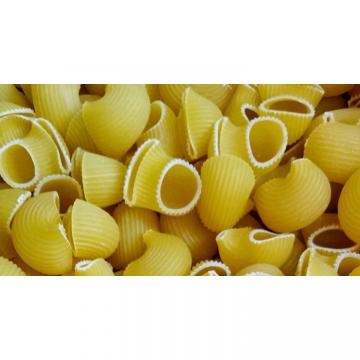



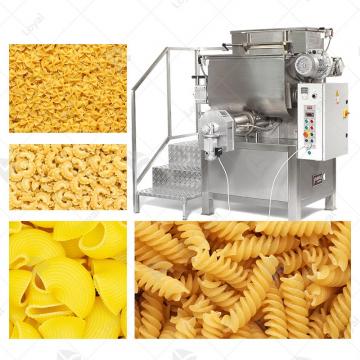
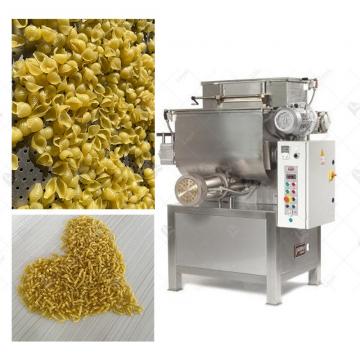 PRECOOKED PASTA PRODUCTION LINE
PRECOOKED PASTA PRODUCTION LINE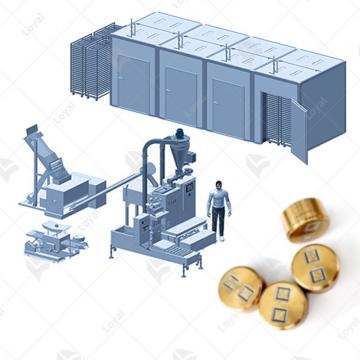 Combined Pasta Machine
Combined Pasta Machine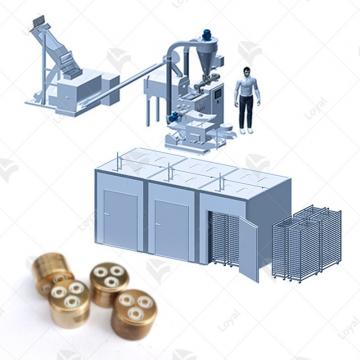 Combined Pasta Production Line
Combined Pasta Production Line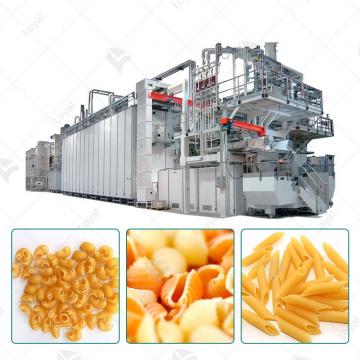 VACUUM PASTA EXTRUDER
VACUUM PASTA EXTRUDER